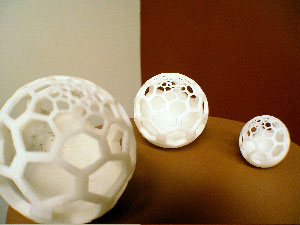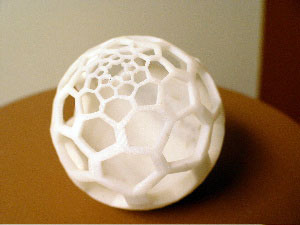I then began to consider if there was an intentional way that I could pierce into the inner space, and thus arose the connection to the Cymatics work of Hans Jenny. | 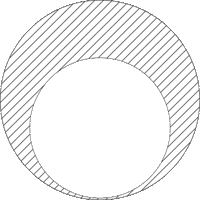 |
New Alexandria
The Crescent Bell is a work to explore how cymatics (sound visualization) and computer modeling can be used in the creation of sculpture, which may shed light upon interesting material acoustics and bell making techniques. It was loosely inspired by Brian Eno's Bell Studies for the Clock of the Long Now.
I initially began working with a 'moon-in-sun' design. It has been used in Egyptian motifs, by the Celts, and others. For me it also relates to a bell curve distribution where the far ends head off to meet each other, rather than being opposite and distant.
I had then began thinking about how this form could be rendered sculpturally, and I imagined a cast metal sphere in which there was an internal hollow, or cavity. It seemed unlikely that there would be any way to cast this out of metal; the only way that occurred to me was a metal rapid-prototyping printer.
However, this latter option seemed to be unlikely to be able to produce a Bell - which was the form that I was being drawn toward.
I then began to consider if there was an intentional way that I could pierce into the inner space, and thus arose the connection to the Cymatics work of Hans Jenny. |  |
 |  |
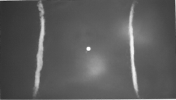 | 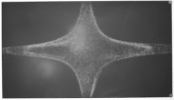 |
Jenny's work was built upon the principle that vibrating surfaces have relative 'low spots' that particles will 'sink' toward. | |
He took the concept further, to the investigation of 3D objects. His work shows that acoustic energy formulates into geometric patterns through an object's shape. |  |
 | I began to consider how this energy would move through my theoretical Crescent Bell. Would it be very regular due to the bell's spherical nature? I thought of piercing through the bell where particles did not accumulate. |
I sketched a model in 3D Studio Max, cleaned it Raindrop Geomagic and rapid-prototyped the model using a Dimension SSI fused deposition modeler (FDM) from Stratasys. | 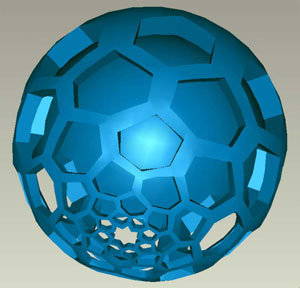 |
 |  |
Holding a physical model drew my attention to an assumption of the design that would likely cause a problem. The removed 'empty' regions are what flex and cause particles to fall to nodal low areas. |
Perhaps if cross-beams were left in those areas then the acoustic energy could still create the flex necessary to the cymatic pattern. |  |
 | Through the use of the physics simulation package ANSYS, the cymatic pattern of the virtual, un-pierced, bell could be modeled and used to guide the rapid-prototyping and casting of a true bell. |
The aim of the Cymatic Bell is to investigate how the material structure of a form leads to the acoustics that we hear. If sound is related to an object's modes of material vibration then some of the sound could be restricted by the form of the material. The idea is supported by the fact that we can tune an instrument by changing its shape or filing it down.
By removing material not necessary to the production of a tone the sound could be released from the confines of the material. The metaphor that I work with here is buoyancy - that the removal of inhibiting material will allow the sound to take on an added quality. I feel like the sound would then 'float' out of the material.
I feel the attention to the origins of sound given here has a historical backdrop in Tibetan singing bowls and monastery bells. I am interested in the acoustic space where the human ear can hear a greater texture of sound than we can build instruments to record and model - particularly the change in consciousness that accompanies this acoustic space, and the sensations (proprioceptive and otherwise) felt when 'there.' My gratitude to the traditions that have carried this knowledge through to our day.
"So when he knows the eternal substratum of everything and all the universe becomes therefore void, where then is Prarabdha Karma to him - the body being a part of the world?"
"When the spiritual sight becomes fixed without any object to be seen, when the Prana becomes still without any effort, and when the Chitta becomes firm without any support, he becomes of the form of the internal sound of Brahma-Pranava."
- Verses 28 and 56 from the Nada-Bindu Upanishad
New Alexandria, 2005
The above information is available here as a PDF document. It is three 8.5" x 11" pages that must be folded in quarters and bound in a spine at the folds. A cross-hairs has been printed to guide folding. Some printers may not center the print on the page, and will require cropping of page-ends once bound (is a neat book is desired). | 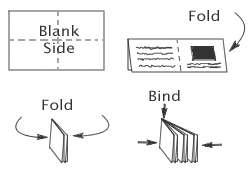 |
